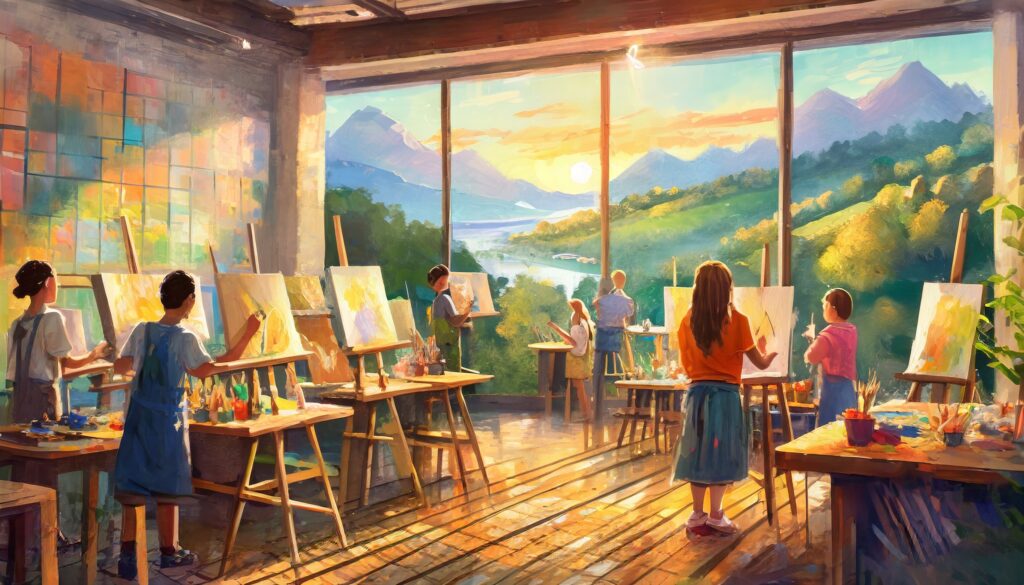
Art and Creativity in a Montessori Environment
February 16, 2024
In a Montessori environment, art and creativity are highly valued and integrated into the curriculum to foster self-expression, imagination, and exploration. Dr Maria Montessori believed that artistic activities play a vital role in a child’s holistic development, contributing to their cognitive, emotional, and social growth. Here’s how art and creativity are nurtured in a Montessori environment:
Open-ended Art Materials:
-
- Montessori classrooms provide a variety of art materials such as paints, clay, pencils, markers, collage materials, and natural objects. These materials allow children to explore and experiment freely, encouraging creativity without prescribed outcomes.
Process-Oriented Approach:
-
- The focus in Montessori art activities is on the process rather than the product. Children are encouraged to engage in art-making for the joy of creating rather than achieving a specific result. This approach promotes self-expression and experimentation.
Freedom of Choice:
-
- Children have the freedom to choose their art materials, techniques, and subjects based on their interests and creative impulses. This autonomy fosters a sense of ownership and responsibility for their artistic endeavors.
Integration with Other Areas:
-
- Art activities are often integrated with other areas of the Montessori curriculum, such as language, mathematics, science, and cultural studies. For example, children may create art inspired by nature, historical events, scientific concepts, or literature.
Art Appreciation:
-
- Montessori educators expose children to a variety of art forms, styles, and artists from different cultures and periods. Children learn to appreciate and analyze artworks through observation, discussion, and reflection.
Environmental Awareness:
-
- Art activities in Montessori often emphasize sustainability and environmental consciousness. Children may use recycled materials, natural dyes, or objects found in nature to create artwork, promoting an understanding of ecological responsibility.
Multi-Sensory Experiences:
-
- Art activities in Montessori engage multiple senses and stimulate sensory exploration. Children may explore texture, color, shape, and form through tactile experiences, enhancing their sensory perception and cognitive development.
Artistic Process and Techniques:
-
- Montessori educators provide guidance and demonstrations on various artistic techniques and processes, such as painting, drawing, sculpting, printing, and collage. Children learn fundamental skills while developing their artistic style.
Individualized Instruction:
-
- Montessori teachers observe and support each child’s unique artistic journey, providing personalized guidance and encouragement based on their interests, abilities, and developmental stage.
Celebration of Creativity:
-
- The Montessori environment celebrates and values children’s creative expression, displaying artwork prominently and providing opportunities for children to share and discuss their creations with peers and adults.
Overall, art and creativity in a Montessori environment play a vital role in fostering self-confidence, self-expression, problem-solving skills, and aesthetic appreciation. By nurturing children’s innate creativity and imagination, Montessori education encourages them to become confident, resourceful, and innovative individuals.


